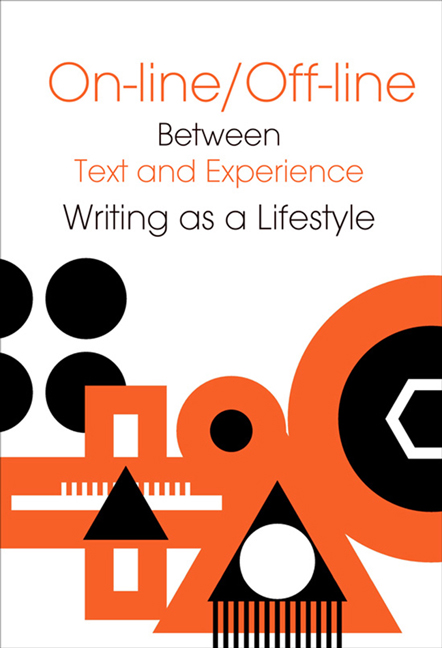Book contents
- Frontmatter
- Contents
- Editors’ Introduction
- ON-LINE/ OFF-LINE
- LITERATURE AND CONVERGENCE
- Poetics in the Age of Convergence
- Convergence and Communication: Genre Analysis of the websites of Polish Writers
- Towards a Generic Analysis of the Microblog (Based on a Study of Twitter)
- How Does the Hybrid Work of Art Exist?
- Liberature in Relation to the Reconfiguration of Aisthesis
- Literature in/of the City – Introductory Comments
- Literary Studies, History and Popular Culture – the Spaces of Convergence
- Afterpop: the Almost Perfect Convergence
- Transcultural Convergence? Polish Poets and Artists and the Oriental Verbo-visuality
- From an E-narrative Poem towards an Interactive Work of Art. Media Convergence Illustrated with DOWN by Zenon Fajfer and The Surprising Spiral by Ken Feingold
How Does the Hybrid Work of Art Exist?
from LITERATURE AND CONVERGENCE
Published online by Cambridge University Press: 12 January 2018
- Frontmatter
- Contents
- Editors’ Introduction
- ON-LINE/ OFF-LINE
- LITERATURE AND CONVERGENCE
- Poetics in the Age of Convergence
- Convergence and Communication: Genre Analysis of the websites of Polish Writers
- Towards a Generic Analysis of the Microblog (Based on a Study of Twitter)
- How Does the Hybrid Work of Art Exist?
- Liberature in Relation to the Reconfiguration of Aisthesis
- Literature in/of the City – Introductory Comments
- Literary Studies, History and Popular Culture – the Spaces of Convergence
- Afterpop: the Almost Perfect Convergence
- Transcultural Convergence? Polish Poets and Artists and the Oriental Verbo-visuality
- From an E-narrative Poem towards an Interactive Work of Art. Media Convergence Illustrated with DOWN by Zenon Fajfer and The Surprising Spiral by Ken Feingold
Summary
Abstract
The aim of this article is to analyze the relation between hybrid works of art in the back-ground of philosophical texts by Luigi Pareyson, Jurij Łotman, Wolfgang Welsch. The questions which are taken into consist of – What is the definition of a hybrid work of art? What is the impact of contemporary culture on the way of being a hybrid work of art? Do the hybrid works of art reflect the experience of contemporary reality? My considerations are based on concrete poetry, book works, book objects and liberature.
Key words: hybrid work of art, theory of formativity, liberature, concrete poetry, artistic book, contemporary culture
Deconstruction has led to the dethronement of sound in favor of writing and it is said that pictorial turn has happened in culture. W.J.T.Mitchell writes about it in his famous book Picture Theory. In parallel, the linguistic turn, related to the question of language as a communication tool – which apart from links with the linguistic turn in philosophy, is linked with in-fluences coming from structuralism and poststructuralism – is being dis-cussed in art.
The main issue of this article is the mode of existence of the hybrid work of art. Reflection on this problem will be possible if we will define what kind of works of art will be discussed in this paper.
I will focus on the attempt to describe the works in which the inte-gration of visual and verbal signs occurred (on selected examples), which in effect changes the perception of such works. Language in this type of work (located on the border between literature and visual arts), and in fact the writing with its visual aspects, is the material that serves as the foundation of the process of forming an artwork. At the core of hybrid works lies the ontological heterogeneity, because the carrier of sense is not homogeneous in their case. An important role is played by the materiality of the work, which also fulfills the semantic role. From the perspective of literary studies and the “baggage” of Ingarden's category, the situation is worrying. The elements of language have been appearing in art for a long time. Suffice it to recall that cubist experiments with language elements in the early twentieth century.
- Type
- Chapter
- Information
- On-line/Off-lineBetween Text and Experience: Writing as a Lifestyle, pp. 237 - 254Publisher: Jagiellonian University PressPrint publication year: 2016

